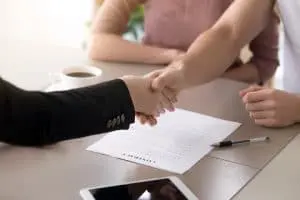
Buying Signal
Buying Signal
However, what on earth is a buying signal? Well a buying signal is a verbal cue, that a sales prospect will give you to indicate that they are ready to buy or in a complex sale, that they are committed to move forward.
Buying signals are important to watch out for because it tells you when a prospect is ready to buy, rather than relying on guesswork or waiting for them to say, “can I buy please?”.
Closing is very much about timing.
This is easy to say but more difficult to spot in a sales conversation, so here some tips;
Statement or Question
Buying signals usually come in the form of a statement or a question that indicates that they want to go ahead.
Frequently Subtle
Buying signals are frequently subtle e.g. “Yes, I’ll really want to go all out and do it properly this time” or “we really need to do something like this” or “can you go over that payment terms again?” or “I can see this making a big difference”
Body language
Provided you can see them, body language is an indication e.g. When a prospect continually nods their head up and down, they are visually saying “I want to buy”
Timing
Be careful not to ask too early but perhaps test the water a little to move the conversation forward
Communicated Value
Provided you’ve communicated the value and qualified the opportunity, the prospect will let you know when they are ready to buy. The salesperson just needs to be listening. Practice makes perfect, so it’s best that when you’re on a call or visiting a prospect, at the point when you’re expecting a decision, actively listen out for a buying signal. Then review the call to see if you missed the buying signal.
What happens then?
After you’ve got the buying signal;
- Ask for the business
- When they say ‘yes’ – It is important to move the sale forward quickly. There is no need to continue trying to convince the customer to buy, so stop selling; they already said yes.
- Go through the signing up process; contracts, deposit or full payment
- Get out of there, politely; Don’t risk hanging around, putting an extra ‘dollop of cream’ on the conversation. It’s high risk and totally unnecessary



